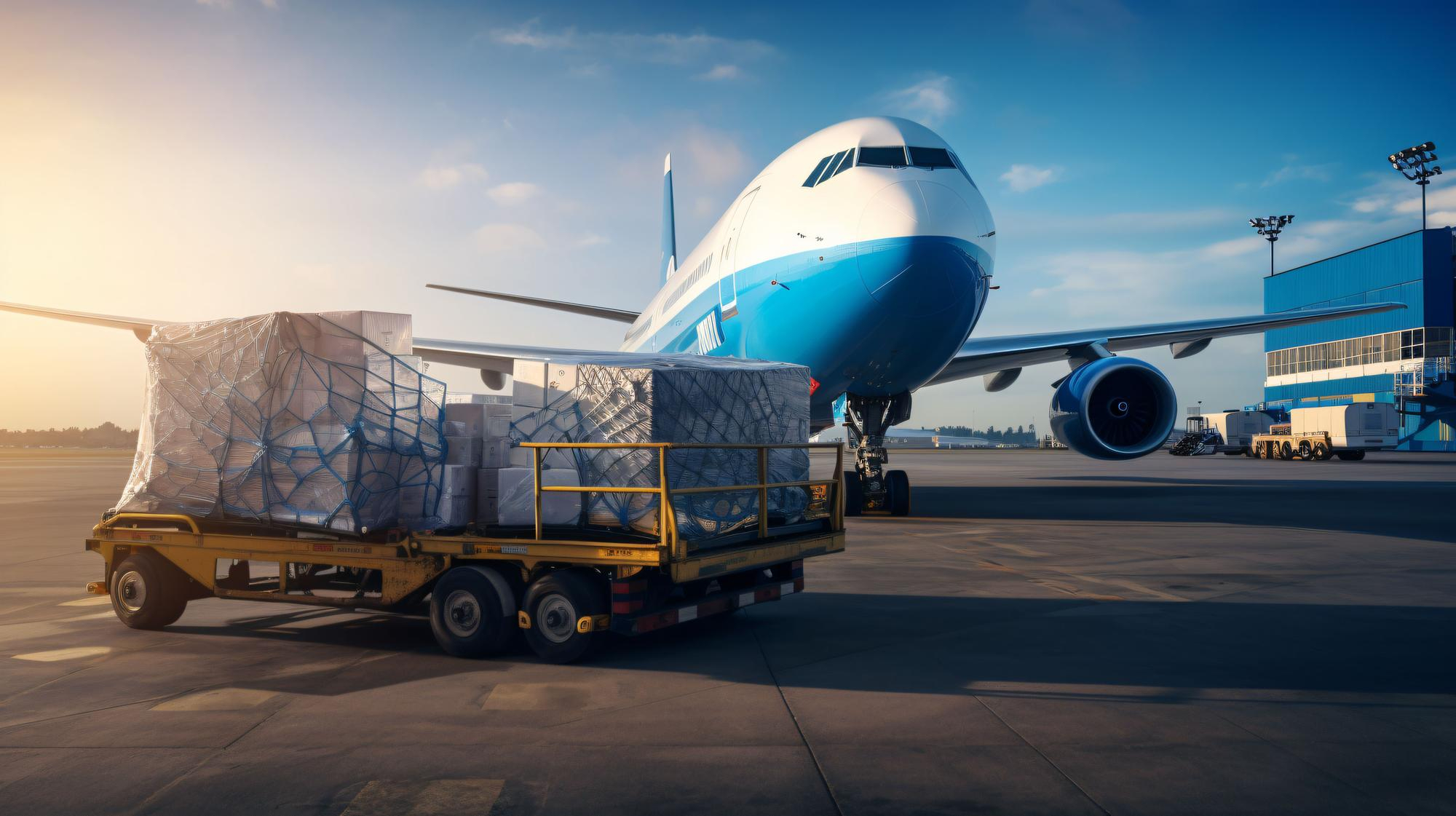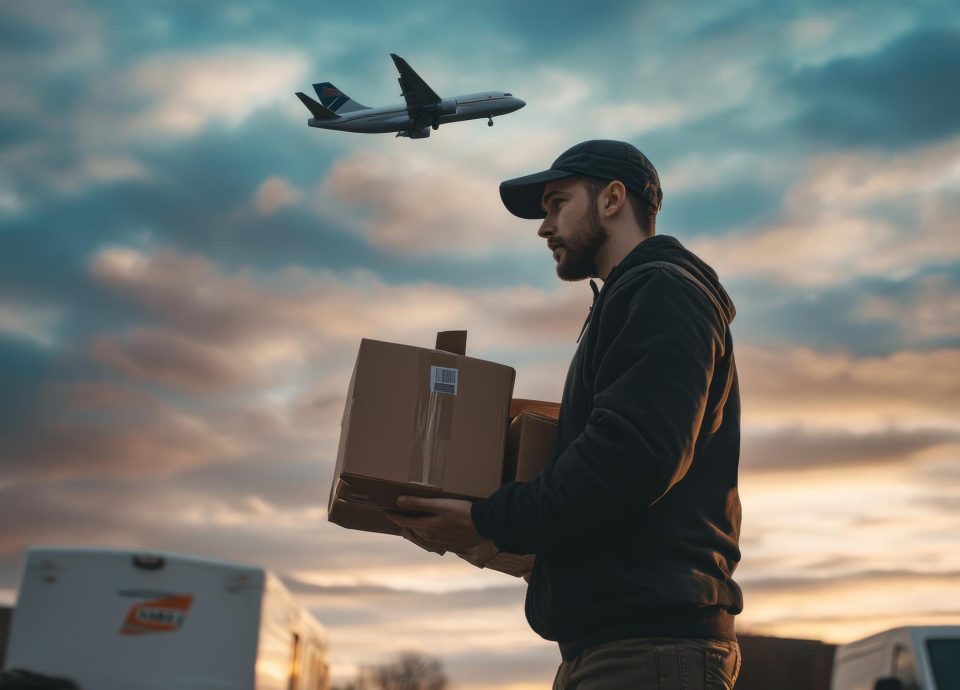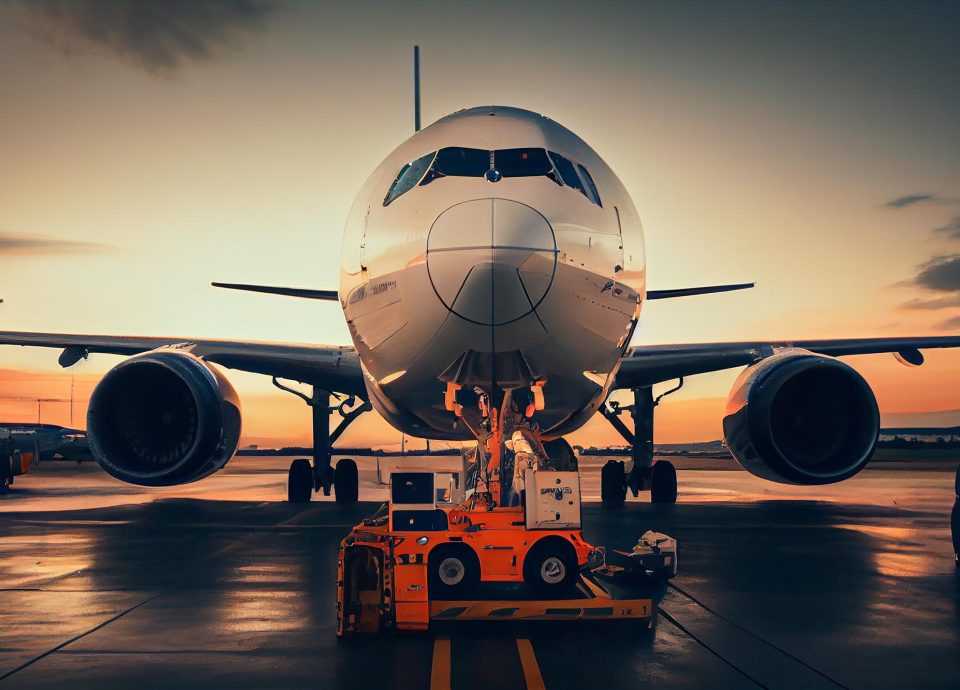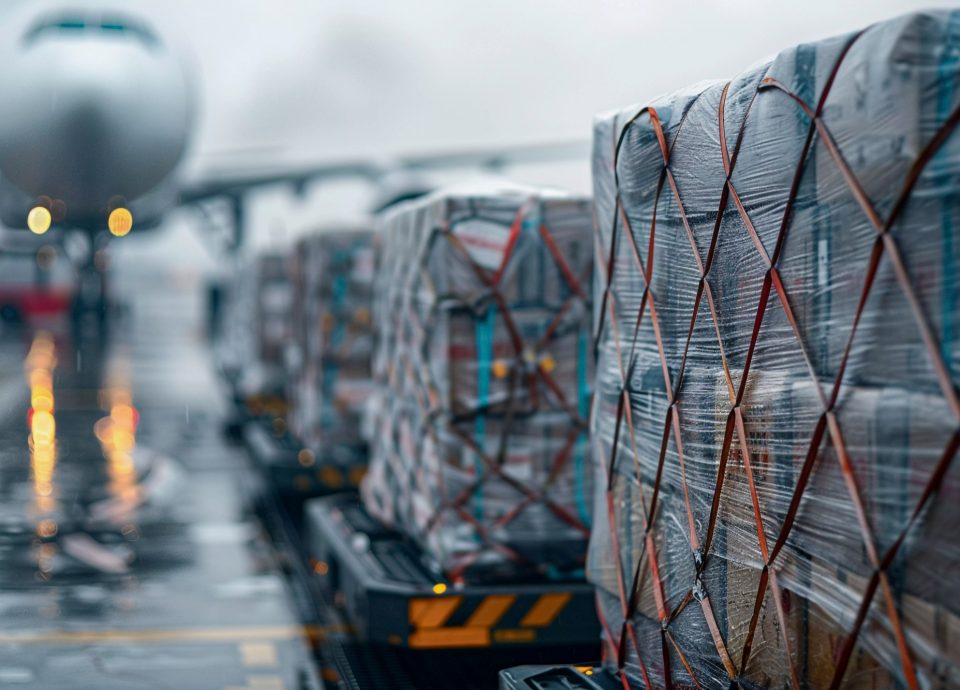When the clock is ticking and the stakes are high, businesses need a transport mode that delivers speed, security, and certainty. That is exactly what airplane shipping provides. For high-value electronics, precision instruments, pharmaceuticals, luxury goods, prototypes, and museum-grade items, the tolerance for loss, damage, or delay is close to zero. In those scenarios, airplane shipping isn’t a luxury—it’s the sensible, risk-aware choice.
This guide explains why airplane shipping outperforms slower or rougher modes for delicate and expensive cargo, how the end-to-end process works, and what best practices reduce risk even further. It also shows how Sprinter Emergency Transport Inc. designs and manages air cargo shipping programs that protect value while keeping transit times tight and predictable.
What Exactly Is Airplane Shipping?
Airplane shipping is the transportation of goods via aircraft—either in the belly of passenger flights or on dedicated freighter planes—using specialized airport handling, security screening, documentation, and ground support. Compared to other modes, airplane shipping reduces touchpoints, compresses lead times from weeks to days (or hours), and takes place inside highly controlled environments.
Passenger Belly vs. Freighter Capacity
-
Passenger belly: Ideal for smaller consignments with high frequency. Multiple daily departures give air cargo shipping unmatched schedule flexibility on common lanes.
-
Freighters: Purpose-built aircraft with large doors, higher volumetric capacity, and options for outsized cargo, active temperature containers, and secure compartments.
The Step-by-Step Flow of Airplane Shipping
-
Planning & booking: Capacity is reserved, routings are selected, and alternates are prepared in case of disruption.
-
Packaging & labeling: Protective, often lightweight materials are used to meet airline standards and minimize shock, vibration, and tilt exposure.
-
Documentation: Air Waybill (AWB), commercial invoice, packing list, and applicable permits are prepared with precise values, HS codes, and Incoterms.
-
Security screening: Cargo is screened under national aviation rules, then transferred to the airside cargo area.
-
Build-up & uplift: Freight is secured to pallets or loaded into ULDs and uplifted on the scheduled flight.
-
Arrival & clearance: Pre-filed entries accelerate customs; bonded cartage moves the freight quickly to the final mile.
-
Delivery & POD: Chain of custody is maintained to proof of delivery, with milestones captured throughout the airplane shipping journey.
Why Airplane Shipping Wins for High-Value or Fragile Cargo
1) Speed Eliminates Risk Exposure
Every extra day in transit is another day of handling, theft exposure, and environmental fluctuation. Airplane shipping compresses time-in-risk from weeks to 24–96 hours on intercontinental lanes, meaning fewer opportunities for loss and a faster path to revenue.
2) Fewer Touches, Fewer Problems
With airplane shipping, there are fewer terminals, fewer handoffs, and fewer opportunities for cartons to be crushed, dropped, or misrouted. Controlled airside zones and specialized ground crews keep handling concise and consistent.
3) Security That Matches the Stakes
Airports operate under strict screening and access controls. High-value moves can be sealed, escorted, or stored in secure vaults while awaiting uplift. Combined with tamper-evident packaging, airplane shipping offers a markedly stronger security posture.
4) Environmental Control & Cold Chain
Fragile goods often have environmental limits. Airplane shipping supports passive and active temperature solutions, validated containers with data loggers, and shorter exposure windows on the ramp.
5) Predictable Schedules and Global Reach
Multiple daily flights on trunk routes and direct access to secondary markets through hubs make air cargo shipping uniquely predictable—even when the destination is remote or landlocked.
6) Better Insurance Outcomes
Insurers favor shipments with fewer touchpoints and better security. Airplane shipping often enables more favorable coverage terms and faster claims adjudication thanks to rich milestone data.
Total Cost of Speed: Why Airplane Shipping Can Save Money
At face value, air rates are higher per kilogram than ocean or deferred ground. But smart shippers evaluate total landed cost, not just linehaul. Airplane shipping often reduces:
-
Inventory carrying costs: Faster turns mean less capital tied up in stock.
-
Production downtime: Avoiding line-down events or missed SLAs dwarfs the rate delta.
-
Shrink and damage: Fewer touchpoints and secure handling preserve full-value saleability.
-
Marketing & launch risk: When timing is the brand, airplane shipping protects the calendar.
If a $12,000 premium avoids a $100,000 line-down penalty, prevents obsolescence on a seasonal launch, or protects a $500,000 prototype, the case for air cargo shipping is obvious.
Industries That Rely on Airplane Shipping
Pharmaceuticals & Biotech
Strict stability windows and GDP handling require the speed and temperature control airplane shipping provides.
Technology & Semiconductors
High value, high shrink risk, and rapid product cycles make air cargo shipping the standard for chips, optics, and precision components.
Luxury Retail & Fine Art
Security, provenance, and flawless condition are paramount. Airplane shipping minimizes handling and supports climate controls and escorts.
Aerospace & Automotive
A single missing part can ground fleets or halt assembly lines. Airplane shipping keeps uptime intact.
Medical Devices & Lab Reagents
Sterility, calibration integrity, and patient outcomes demand rapid, predictable delivery—perfect for air cargo shipping.
15 Situations Where Airplane Shipping Is the Clear Winner
- A product launch date can’t move.
- A factory risks line-down without a critical part.
- Temperature excursions would invalidate a lot.
- A museum loan needs controlled handling and climate.
- You must beat a regulatory cutoff or tender deadline.
- Shrink risk is high on a particular corridor.
- Customer penalties escalate after 48 hours.
- A warranty replacement averts heavy downtime costs.
- Marketing spend is tied to shelf date alignment.
- The consignee is in a landlocked or infrastructure-poor region.
- A prototype must arrive for investor demos.
- A recall requires urgent reverse logistics.
- Trade show booths must be in place before doors open.
- Perishables must hit peak freshness windows.
- Any case where the value of time outstrips the rate delta—airplane shipping wins.
Packaging & Handling Best Practices for Fragile and High-Value Freight
Choose Protective, Lightweight Materials
Use double-wall cartons or crates with custom foam, honeycomb panels, and internal bracing. Airplane shipping favors strong yet light solutions that protect without inflating dimensional weight.
Immobilize, Isolate, Indicate
-
Immobilize: Zero movement inside the package through blocking and bracing.
-
Isolate: Shock-mount sensitive components and separate from exterior walls.
-
Indicate: Use shock/tilt indicators, DO NOT STACK cones, and clear handling icons.
Validate for Real-World Hazards
Simulate drop, vibration, and compression according to recognized protocols (e.g., ISTA). Airplane shipping reduces risk but cannot remove physics—validation closes the gap.
Labeling & Data
Include serial numbers, part IDs, and return addresses inside and outside. For cold chain air cargo shipping, deploy calibrated data loggers and keep data with the shipment record.
Compliance, Security, and Government Resources
Airplane shipping operates inside a robust regulatory framework to keep cargo secure and trade compliant.
- Transport Canada – Air Cargo Security Program
- Canada Border Services Agency – Importing Commercial Goods
A professional provider will align your documents, prepare pre-arrival data, and ensure your airplane shipping is screen-ready to minimize airport dwell.
Visibility & Data: Make Every Milestone Count
For sensitive cargo, you should see everything. Expect airline and handler scans from tender through delivery:
- Received, screened, built, uplifted, arrived, customs status, recovered, out for delivery, POD.
- Exception alerts for delays, temperature excursions, or route changes.
- API/EDI integration with your ERP/TMS so finance and operations don’t chase updates.
Airplane shipping becomes exponentially more valuable when your team can act on live data.
Sustainability and Airplane Shipping
While aircraft are energy intensive, there are meaningful ways to reduce impact without increasing risk:
- Favor newer aircraft and high-load-factor routings.
- Participate in SAF (sustainable aviation fuel) programs where available.
- Use right-sized packaging to cut dimensional weight.
- Consolidate compatible shipments without compromising timelines.
A good partner will measure and report emissions per shipment so you can make informed tradeoffs when air cargo shipping is essential.
How to Compare Providers for High-Stakes Airplane Shipping
What to Ask
- Do they have 24/7 operations with real escalation contacts?
- What airlines and freighters do they access on your lanes?
- Can they show recent case studies for sensitive or high-value moves?
- How do they handle screening, vaulting, escorts, and bonded cartage?
- What visibility and API options are available?
- How do quotes break out fuel, security, terminal, and surcharges (no surprises)?
Red Flags
- Vague fees and “TBD” line items.
- Limited capacity options in peak season.
- Manual status updates and missing scan events.
- Thin answers on lithium batteries, DG, or cold chain.
Airplane shipping for fragile, high-value cargo calls for experience you can audit—not promises you can’t verify.
Why Choose Sprinter Emergency Transport Inc.
Airplane shipping is where we live. Sprinter Emergency Transport Inc. specializes in urgent, high-stakes international moves that require precision and accountability.
What We Deliver
-
Priority capacity: Access to passenger belly space, dedicated freighters, and charters—so your air cargo shipping lifts off even in peak season.
-
24/7 orchestration: Named operations contacts, proactive exception management, and real escalation paths.
-
Compliance baked in: DG and lithium expertise, validated cold chain, and airtight documentation for smoother customs.
-
Secure handling: Screen-ready tender, tamper-evident seals, vaulting and escort options, and bonded cartage at destination.
-
Real-time visibility: API/EDI feeds, milestone scans from tender to POD, and temperature data when applicable.
-
Transparent pricing: Itemized quotes that match invoices—no gotchas.
When the value is high and the freight is fragile, our airplane shipping programs protect what matters most: your product, your brand, and your deadlines.
Mini Case Snapshot: A Prototype Saved the Launch
A technology client needed two fragile prototypes in Frankfurt within 48 hours for investor demos. We executed a split-lot airplane shipping plan using shock-mounted crates, pre-filed customs entries, vault storage during a weather delay, and escorted bonded cartage on arrival. Both units arrived flawless and on time; the client secured their funding round. That’s the difference the right air cargo shipping partner makes.
When the Stakes Are High, Choose Airplane Shipping
High-value and fragile cargo have one thing in common: a low tolerance for risk. Airplane shipping reduces that risk with speed, security, and control you can’t match with slower modes. It protects product integrity, keeps promises to customers, and converts opportunities that would otherwise be lost to the calendar.
Sprinter Emergency Transport Inc. designs air cargo shipping solutions that are fast, compliant, and visible—end to end. Tell us your timeline, commodity, and lanes, and we’ll build a plan that safeguards value and meets the moment.
Need an urgent plan now? Contact Sprinter Emergency Transport Inc. for a flight-ready quote and a dedicated operations team today.
Frequently Asked Questions
1) What makes airplane shipping better for fragile items than other modes?
Airplane shipping minimizes handling, shortens time in transit, and uses controlled airport environments with specialized equipment, reducing shock, vibration, and theft exposure.
2) How do I keep insurance satisfied during airplane shipping?
Use robust packaging, document serial numbers and values precisely, add shock/tilt indicators, and ensure full milestone visibility. Insurers favor air cargo shipping because it provides rich scan data and fewer touchpoints.
3) Can lithium batteries and electronics move via airplane shipping?
Yes—under strict IATA rules for classification, packaging, labeling, and state-of-charge. A qualified provider ensures your airplane shipping complies to avoid delays or penalties.
4) What temperature options exist for airplane shipping of pharmaceuticals or perishables?
Passive thermal packaging, gel packs, dry ice (within limits), and active containers with power and telemetry. Airplane shipping also shortens exposure windows between controlled nodes.
5) How do I compare quotes for airplane shipping fairly?
Normalize service level, chargeable weight (dim vs. actual), fees (fuel, security, terminal), and last-mile parameters. Transparent, itemized quotes make airplane shipping comparisons accurate.
6) Is airplane shipping always more expensive overall?
Per kilo, typically yes—but airplane shipping often reduces total landed cost by avoiding downtime, protecting product value, enabling faster invoicing, and cutting inventory carry.
7) How fast can Sprinter Emergency Transport Inc. launch airplane shipping on an urgent lane?
In major gateways, we can collect, screen, and uplift the same day, with alternates pre-planned. Our team manages exceptions in real time so air cargo shipping stays on schedule.




